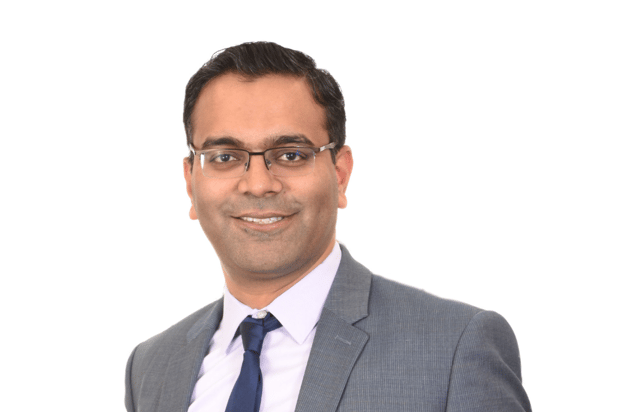

This article was produced in partnership with Munich Re US.
Bethan Moorcraft, of Insurance Business, sat down with Raghuveer Vinukollu, SVP, climate resilience and solutions lead at Munich Re US to discuss risk mitigation and transfer in a changing climate.
The US accounted for a high proportion of global natural disaster losses in 2021, at roughly $145 billion, of which $85 billion were insured. Events of note included Hurricane Ida, which caused losses of $65 billion, of which approximately $36 billion were insured; the Texas deep freeze, with losses of $30 billion, half of which were insured; and a series of violent storms and tornadoes across several states in the central and southeastern US.
Climate research increasingly confirms that extreme weather has become more likely. As climate change continues to affect weather patterns and cause more natural disasters and severe weather events, Munich Re US has identified an educational need for insurers, brokers, regulators, businesses, and communities to understand the widening insurance protection gap and the scope of potential losses due to climate change.
Insurers and brokers need to recognize the “lack of stationarity" and constant evolution in climate risk, which means that events of the past cannot be used to predict risk in the future, according to Raghuveer Vinukollu (pictured), SVP, climate resilience and solutions lead at Munich Re US.
“With the frequency and severity of natural disasters and severe weather events increasing, the (re)insurance industry must try to understand climate risk and the impacts it has on loss costs and portfolio management,” said Vinukollu. “We have to develop affordable and sustainable insurance solutions and manage the risks through effective mitigation, which includes working with other stakeholders [regulators, businesses, and communities] to make our infrastructure, land-use management, and building codes more resilient.”
Read next: The risks associated with a changing climate
Munich Re US has been researching climate risk since the 1970s and has been a pioneer in utilizing meteorologists to best understand climate and weather risk. Vinukollu said the role of reinsurers is to “look into the future” to determine possible loss trends, and to work with insurers and brokers to figure out potential solutions.
To achieve this, many reinsurers have developed modeling and data analysis tools to assess the impacts of climate risk on physical assets and to build single risk/portfolio analytics that would create intelligence around the impacts of chronic climate risks. Munich Re US, for example, has developed a Location Risk Intelligence Tool, which enables customers to identify, assess, and factor climate risks into their underwriting and decision-making.
“As a reinsurer, Munich Re US is a risk taker. We’re constantly looking into the future, saying: ‘How are we going to manage the emerging risks ahead of us and how can we help our brokers and clients do the same?’There are a lot of models in the marketplace, but Munich Re has been focused on climate risk since the 1970s. We have our own data sets, including loss data, which is incredibly powerful,” said Vinukollu . “We can use that knowledge to educate insureds on the importance of mitigation, and regulators (and communities) on the impacts of climate change.”
Munich Re US has been engaging in community-based climate risk mitigation and recovery projects, with the aim of boosting overall climate resiliency and sustainability. For example, the reinsurer has been working with the town of Paradise in California, which was almost entirely destroyed in the 2018 Camp Fire, to help them “build back better” and secure affordable and sustainable insurance solutions for the future.
The firm is also working actively with flood-exposed communities to help them mitigate flood risk and reduce the insurance protection gap. Furthermore, Munich Re US is actively engaged with the Insurance Institute for Business and Home Safety (IBHS) to develop better building standards across the US with more resilience to the perils of wind, severe convective storms, and wildfires.
“We need to change our behaviors because these natural disasters and extreme weather events will continue to happen in the future. As we rebuild communities after a disaster, we need to think about resilience and risk reduction. This is where public-private partnerships and community-based solutions are going to be important,” Vinukollu told Insurance Business. “We’re educating communities and showing them the impact of risk mitigation on their risk transfer [insurance] over time, so they see the benefit cost analysis. That really makes a significant difference.”
In addition to leading the charge around climate risk mitigation, Munich Re US is also focused on developing insurance solutions to close the climate risk protection gap. For example, Munich Re US offers affordable white-label flood insurance products for homeowners and business owners in low-to-moderate risk areas. Vinukollu commented: “We’re very proud to say we are really addressing the protection gap there with more than 75,000 homeowners insured for flood, who did not have flood insurance before.”
Munich Re US is also “well ahead of the curve” in developing sustainable solutions for the renewable and clean energy sector, according to Vinukollu. He said: “We’re investing in green technology, and we’re providing performance warranties for batteries, solar panels, and so on. As well as developing regular indemnity solutions, we’re also working on derivative parametric covers for perils like wind. There’s lots going on.”
Learn more about Munich Re US’ climate risk solution at https://www.munichre.com/us-non-life/en/solutions/reinsurance/products/climate-risk.html
